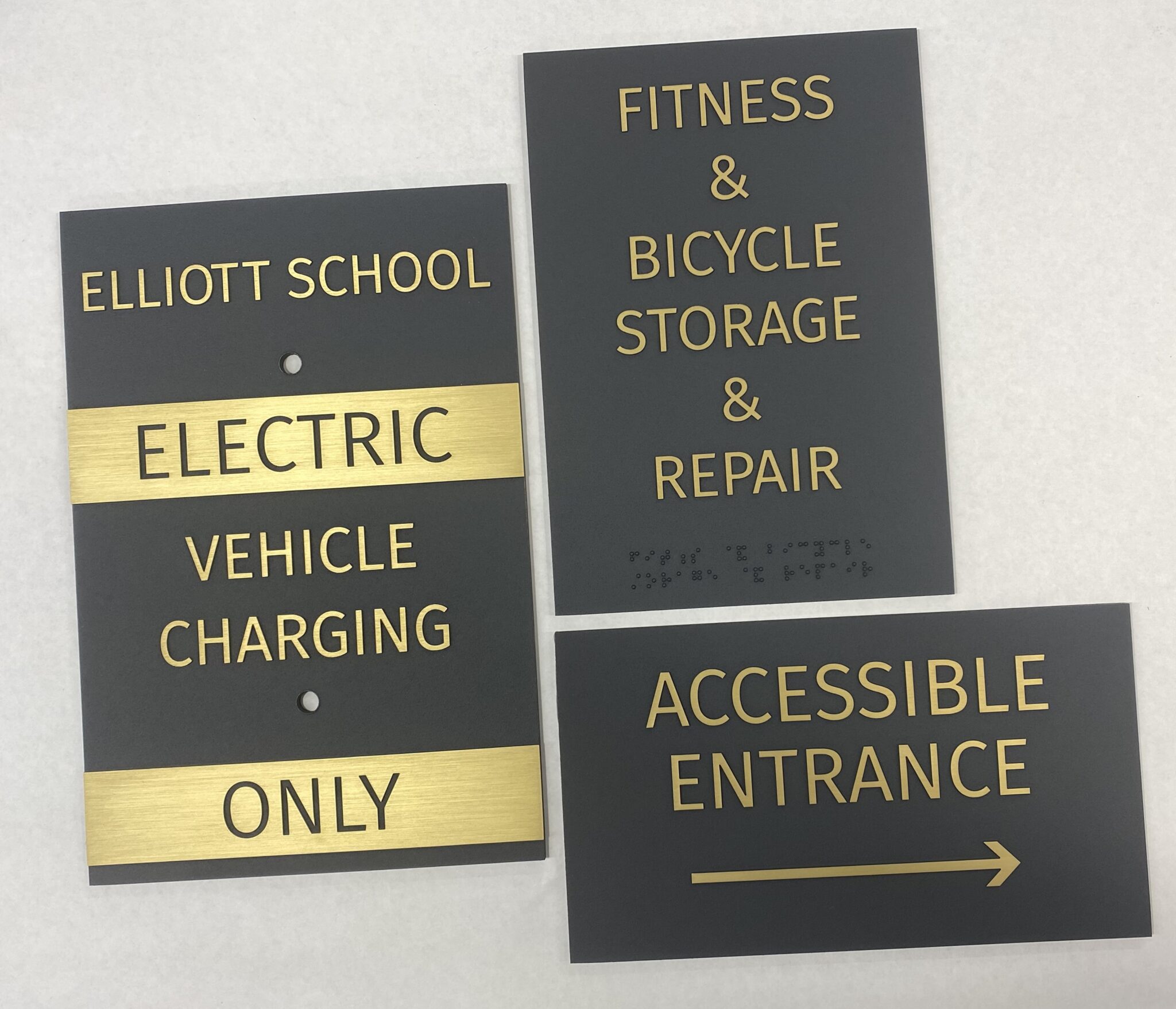The Impact of ADA Signs on Community Availability
The Impact of ADA Signs on Community Availability
Blog Article
Discovering the Secret Functions of ADA Signs for Improved Access
In the world of access, ADA indicators serve as silent yet powerful allies, making sure that spaces are comprehensive and accessible for people with disabilities. By incorporating Braille and responsive elements, these signs break obstacles for the visually impaired, while high-contrast color pattern and legible font styles satisfy diverse aesthetic demands. Moreover, their calculated positioning is not approximate but rather a calculated initiative to assist in seamless navigation. Past these attributes exists a much deeper narrative regarding the advancement of inclusivity and the ongoing dedication to developing fair spaces. What extra could these indicators represent in our pursuit of universal access?
Significance of ADA Compliance
Making sure compliance with the Americans with Disabilities Act (ADA) is important for promoting inclusivity and equivalent accessibility in public areas and work environments. The ADA, enacted in 1990, mandates that all public facilities, companies, and transport services suit individuals with disabilities, ensuring they appreciate the exact same legal rights and opportunities as others. Compliance with ADA criteria not only fulfills lawful obligations however additionally improves an organization's track record by showing its commitment to variety and inclusivity.
One of the vital aspects of ADA compliance is the application of obtainable signs. ADA indications are designed to make sure that people with handicaps can conveniently browse with structures and areas.
Furthermore, sticking to ADA policies can minimize the danger of lawful repercussions and prospective fines. Organizations that fail to conform with ADA standards may face suits or charges, which can be both harmful and economically troublesome to their public image. Therefore, ADA compliance is essential to cultivating an equitable environment for everyone.
Braille and Tactile Elements
The incorporation of Braille and responsive components right into ADA signage embodies the principles of availability and inclusivity. It is typically put underneath the equivalent message on signs to make certain that individuals can access the information without visual support.
Tactile elements expand past Braille and consist of increased signs and characters. These components are designed to be noticeable by touch, enabling individuals to identify area numbers, toilets, exits, and other crucial areas. The ADA establishes certain guidelines relating to the size, spacing, and placement of these tactile components to optimize readability and guarantee uniformity throughout different settings.

High-Contrast Color Design
High-contrast color pattern play a critical duty in enhancing the presence and readability of ADA signage for people with visual problems. These systems are vital as they optimize the difference in light reflectance in between text and background, guaranteeing that indicators are quickly noticeable, even from a distance. The Americans with Disabilities Act (ADA) mandates using specific shade contrasts to accommodate those with restricted vision, making it an essential facet of compliance.
The efficiency of high-contrast colors lies in their capacity to stick out in different lights conditions, consisting of dimly lit environments and locations with glare. Typically, dark text on a light history or light message on a dark background is used to achieve ideal comparison. For example, black text on a white or yellow history gives a stark visual distinction that assists in fast acknowledgment and comprehension.

Legible Fonts and Text Size
When thinking about the style of ADA signage, the choice of legible typefaces and proper message size this website can not be overstated. The Americans with Disabilities Act (ADA) mandates that fonts have to be not italic and sans-serif, oblique, manuscript, very decorative, or of uncommon type.
According to ADA guidelines, the minimal text elevation ought to be 5/8 inch, and it should boost proportionally with viewing range. Uniformity in text dimension contributes to a natural visual experience, helping people in browsing atmospheres efficiently.
Moreover, spacing between lines and letters is integral to readability. Appropriate spacing avoids personalities from appearing crowded, improving readability. By sticking to these criteria, designers can considerably boost accessibility, making sure that signs offers its intended function for all people, regardless of their visual abilities.
Efficient Positioning Approaches
Strategic placement of ADA signs is important for maximizing ease of access and guaranteeing compliance with lawful requirements. Properly positioned indications direct individuals with disabilities effectively, helping with navigating in public spaces. Key considerations include proximity, elevation, and exposure. ADA guidelines state that indications should be mounted at a height between 48 to 60 inches from the ground to guarantee they are within the line of view for both standing and seated individuals. This standard height range is critical for inclusivity, enabling wheelchair users and people of varying heights to access information easily.
Furthermore, indicators need to be positioned nearby to the latch side of doors to allow easy recognition prior to access. Uniformity in sign positioning throughout a center enhances predictability, reducing confusion and improving general individual experience.

Verdict
ADA indicators play a vital duty in advertising availability by incorporating features that deal with the needs of people with specials needs. These aspects collectively foster a comprehensive atmosphere, underscoring the relevance of ADA compliance in guaranteeing equivalent gain access to for all.
In the world of access, ADA signs offer as quiet yet powerful allies, ensuring that spaces are navigable and my company comprehensive for people with specials needs. The ADA, passed in 1990, mandates that all public centers, companies, and transportation services suit people with specials needs, ensuring they appreciate the exact same legal rights and chances as others. ADA Signs. ADA signs are designed to guarantee that individuals with impairments can easily browse with structures and Home Page spaces. ADA standards specify that indications ought to be installed at a height in between 48 to 60 inches from the ground to guarantee they are within the line of view for both standing and seated people.ADA indicators play a vital function in promoting access by incorporating features that resolve the needs of people with impairments
Report this page